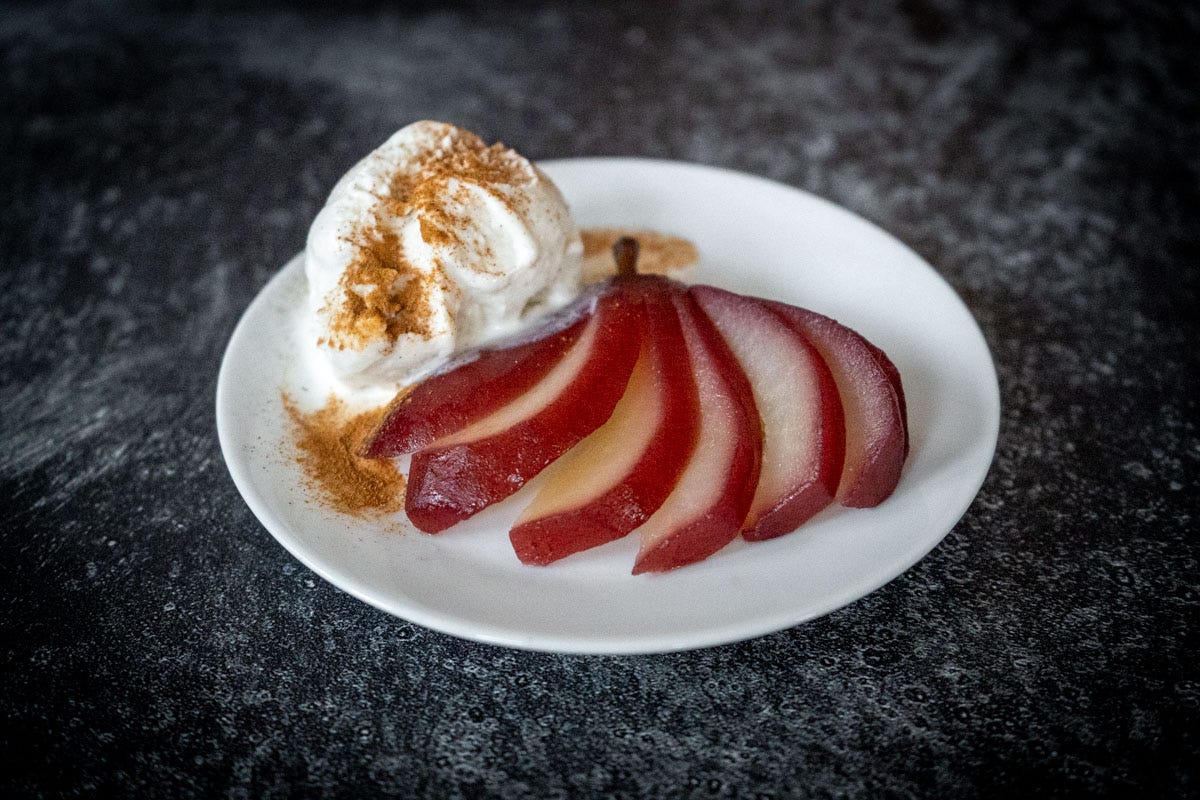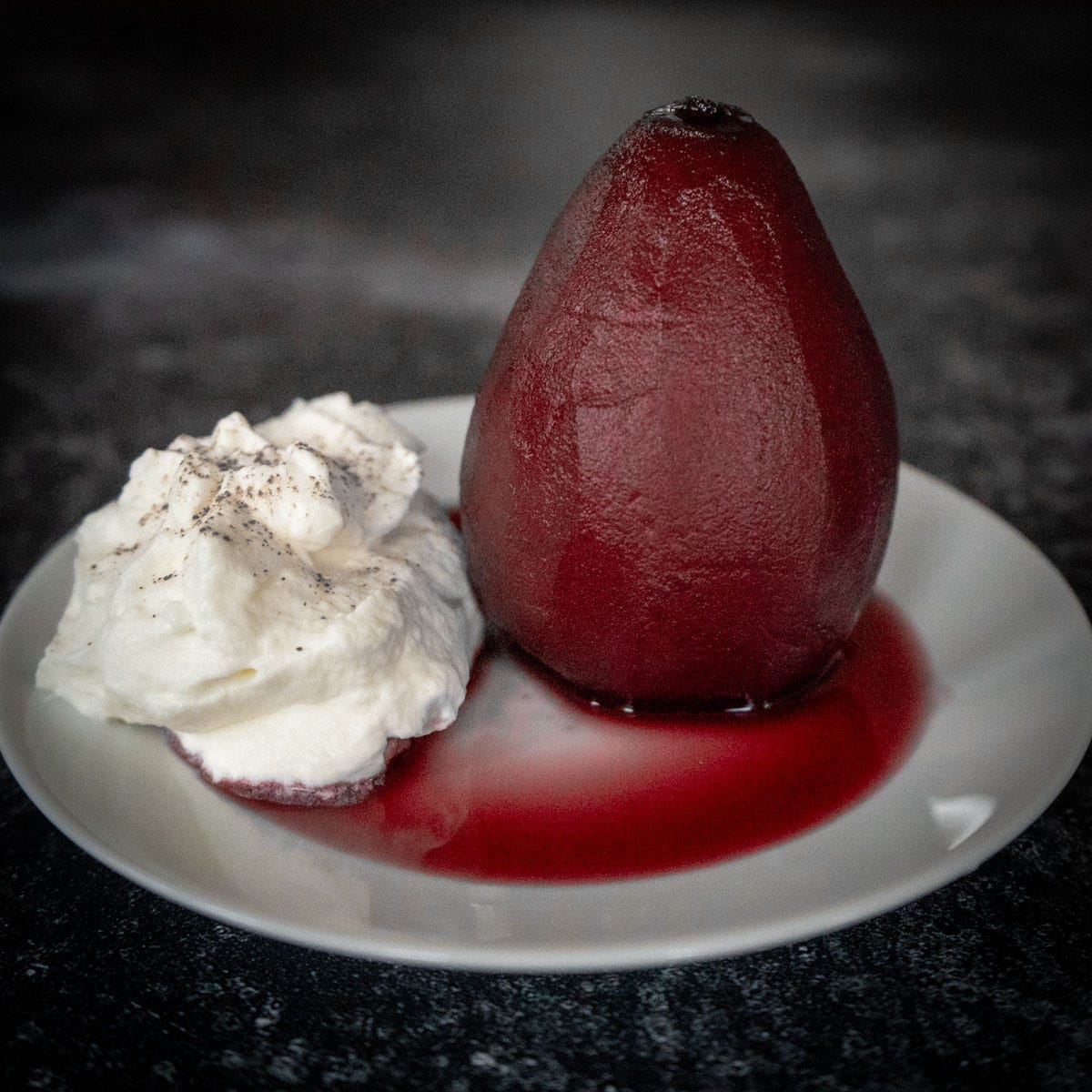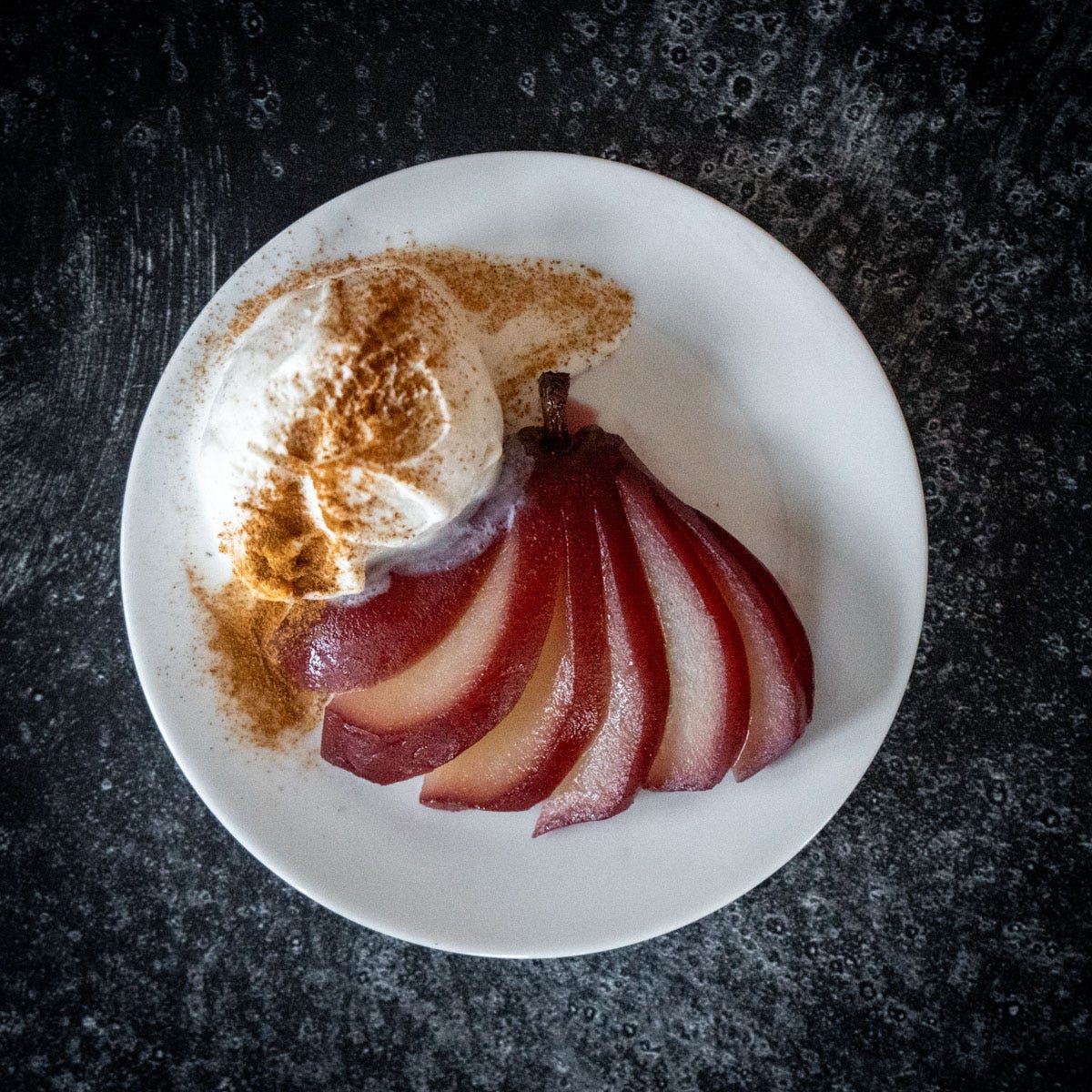I needed a bottle of red wine to make pere al vino rosso.
Usually, I’d ask Stefano to grab me a bottle from his cellar. He wasn’t home, though, so I went down myself. After poking around for a few minutes looking for a go-to red, I decided to drive to our local liquor store and buy one instead. I’d never hear the end of it if I opened a bottle he’d been carefully aging and used it to poach pears.
On my short walk from the parking lot into the liquor store, I crossed paths with a few customers leaving the store, bags in hand. I fixed my face into a friendly expression and prepared to say hello, but one by one, each of them averted their glance and continued on their way.
It struck me that had we been in Italy, we would have greeted each other with a courteous, if not outright friendly, “Buongiorno!” Upon entering, I would have said hello to the storekeeper, engaged in a friendly exchange with the cashier when purchasing my items, and departed with a “Grazie, arrivederci!” Instead, my wine run to our local liquor store was largely transactional.
We’ve only been back in the States for a week after our most recent trip to Montalcino, and the cultural differences in how we interact and engage with one another have been at the forefront of my mind.
In Montalcino, we walked everywhere. We got to know the shopkeepers, the restauranteurs and baristas, the guys working on our home, our neighbors, the woman at the post office, and the couple who come to town twice a week and set up a seafood stand. We even got to know the vigile who gave us a parking ticket and later helped us obtain a resident parking pass.
At the seafood stand, we ran into a neighbor who’d also stopped by to buy fish for dinner. We chatted for some time with the sea mongers and him. When we got home, we realized that instead of two spigole and some calamari, we had an orata and a half-kilo of mazzancolle. They must have given me his bag instead of ours! I walked back up the hill to their shop, and even though it was 30 minutes later, the neighbor was still there talking away. We shared a laugh, swapped bags, and said arrivederci once again.
The distinctions in how we interact in Italy are nuanced but real. In Montalcino, we took time to make small talk with the shopkeepers, even when we were in a hurry. We accepted our neighbor’s invitation to come inside and see his home, even though we’d just met him. We stopped to have a caffè with a friend, even when were on our way somewhere. We asked locals for information instead of just Googling it. We made an effort to get to know the baristas and waitstaff who served us. We greeted people we passed on the street, even if we didn’t know them.
For an American like me, who speeds through life with a full schedule and draws satisfaction from checking items off the to-do list, this way of life requires deliberate down-shifting of my gears. Sometimes, I feel impatient to get about my business. However, when I do slow down, I find that I prefer the slower pace and cherish the human connection.
As I drove (not walked) home with my wine from the liquor store, I reflected that this relationship-first orientation and prioritization of human interactions is part of what Stefano calls l’italianità - an Italian way of doing things. It’s the banter, the friendly exchanges, the common courtesies that build community and contribute to our social fabric. It’s too often missing here in the States.
As visitors from all over the world flock to Italy to see the Colosseum and the Duomo of Florence, to take selfies on the Amalfi Coast and in the Cinque Terre, to admire the art and architecture and to enjoy the food and the wine, I hope they also slow down enough to experience and appreciate l’italianità; it’s Italy’s true national treasure.
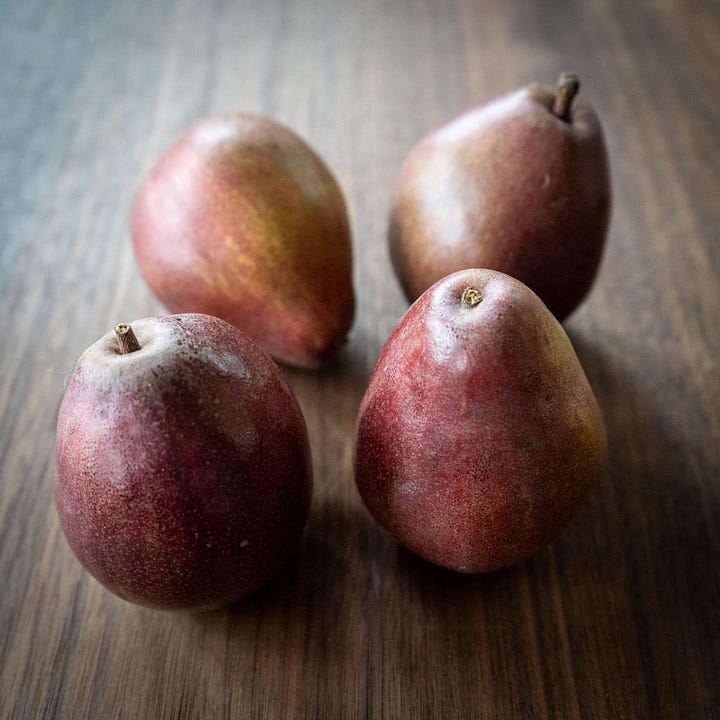
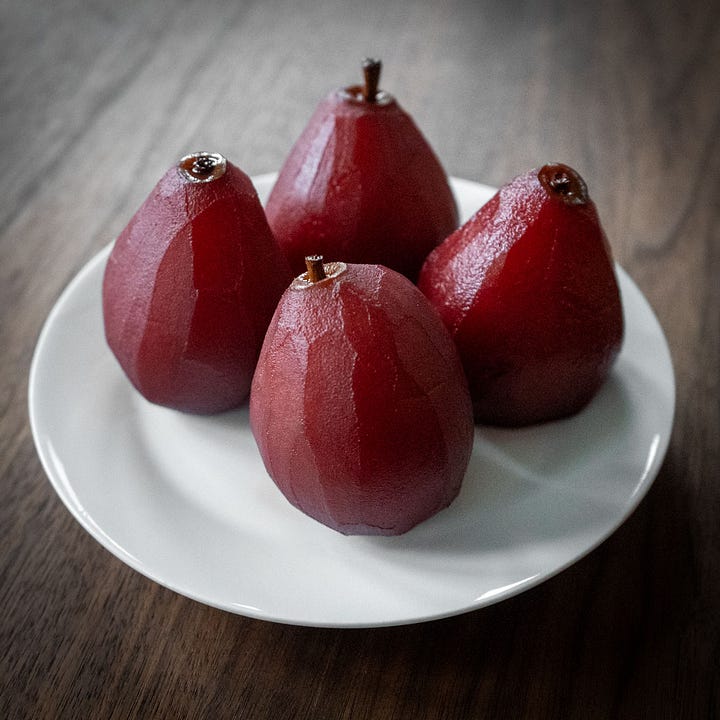
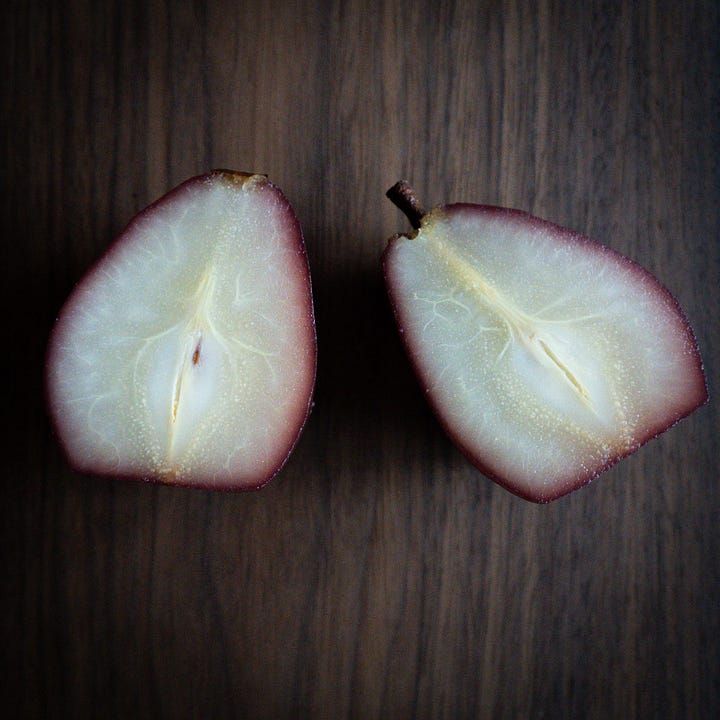
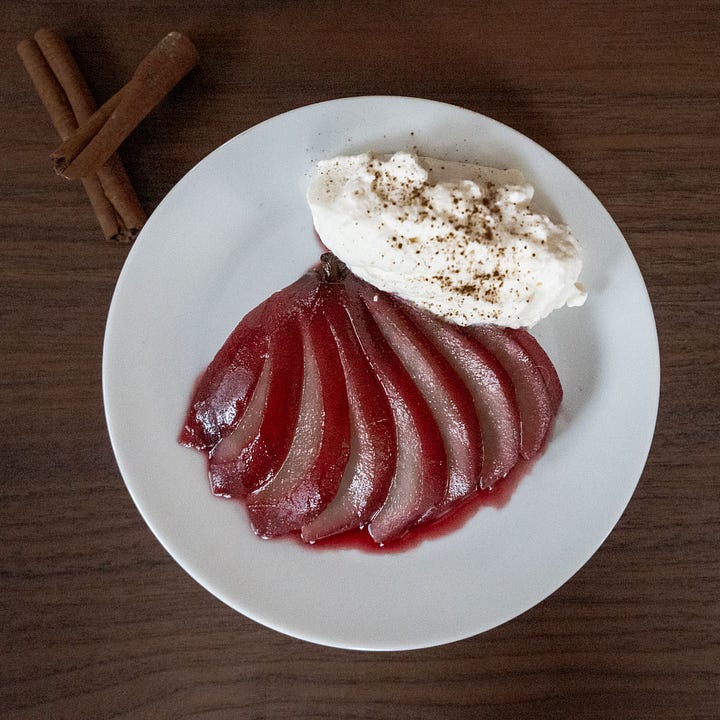
Pere al vino rosso, pears poached in red wine, is a simple yet elegant dessert and a classic Italian recipe. Its wintery flavors, beautiful red color, and the fact that it can be prepared ahead of time make it perfect for holiday entertaining.
In restaurants in and around Montalcino, it is often made with Brunello. I couldn’t bring myself to poach pears with a bottle of Brunello, so I settled for a lovely Rosso di Montalcino instead. Any full-bodied red wine will work just fine.
Ingredients
4-8 servings
If you serve the pears whole, plan on one pear per person. If you slice and fan the pears, each pear will provide two servings.
4 pears, ripe but not overly soft
500 ml red wine
200 ml water
200 grams sugar
1 cinnamon stick
3 cloves of nutmeg
Optional:
Orange zest
Star of Anice
Cardamom
For garnish:
Whipped cream
Vanilla ice cream
Cinnamon
Instructions
Poach the pears
Add the wine, water, sugar, and spices to a small saucepan over medium-low heat.
Peel the pears, leaving the stem in place. Slice a small section off the bottom of each pear so that they stand upright.
When the sugar has dissolved, place the pears into the saucepan. Cover and allow the pears to simmer in the wine for 35-40 minutes, turning them occasionally to ensure they cook evenly. Use a toothpick to check for doneness. The flesh of the pear should be soft but should hold its form.
When the pears are cooked, turn the heat off and allow the pears to cool fully in the liquid.
When the pears are cool, remove them from the liquid and set aside.
Remove the spices and place the saucepan over medium heat. Allow the wine mixture to simmer for 20-30 minutes until reduced to a syrup.
Serve the pears
You may serve the pears whole, but we think they are prettier and easier to eat sliced and fanned.
To do so, slice the pears in half. Use a paring knife to carefully cut out the stem and the core, using a melon baller to scoop out the core if helpful. Turn the half-pear onto a cutting board flat-side down and make even slices in the pear, leaving the top intact. Transfer the pear to a dessert plate and carefully spread the slices into a fan shape.
Drizzle the wine reduction over the pears, add a dollop of whipped cream or a scoop of vanilla ice cream, and garnish with a dusting of cinnamon. drizzled in the wine reduction with a dollop of whipped cream or ice cream and a sprinkling of cinnamon.
Notes:
Any variety of pear will work as long as the pear is firm and not overly soft. We used red D’Anjou pears because they were the proper ripeness and had the prettiest shape.
Some recipes call for a slice of orange zest, a star of anise, and cardamom. Feel free to experiment with the spices and flavors you like best.





